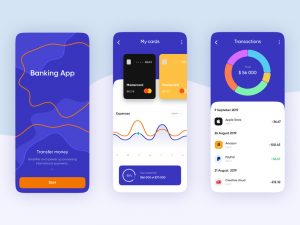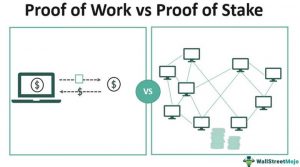
The creation of business ecosystems is gaining momentum. More and more companies are trying to create their own “Universe”, which has all the necessary functionality. This is how superapps appear. Let’s take a look at what a super app is, why they are created and what they give to business.
What are “superapps”?
The super app is a multifunctional mobile app that forms a single ecosystem. At the same time, developers may not be related to each other, but as a result, their products are combined into one “Universe”.
A business ecosystem is being created in which independent producers of goods and services enter into partnerships.
The term superapp first appeared in 2010. The founder of Blackberry just called the closed ecosystem, which included a large number of applications for devices. Users were expected to actively use all or most of the applications because they are interconnected.
The super app has been actively developed thanks to the Chinese messenger WeChat. Initially, it started as a simple chat for communication, but gradually acquired new features. It became possible to order a taxi directly from the chat, then they added the function of buying tickets to cinemas and theaters, food delivery services. This is how WeChat became a superapp.
Many investors saw the future in this direction, so super applications began to actively develop in other countries, including post-Soviet ones. As an example: Yandex Go. This, by the way, is a closed type of ecosystem in which there are no third-party applications. But it combines a large number of internal resources of the company.
What do they give users and businesses
Super app for business brings great benefits. Users also benefit from using applications in the same ecosystem. Here’s what the super app gives:
- Due to the large number of offers and advanced features, the target audience is kept within the ecosystem. This allows the business to gain customer loyalty and expand its base. If users need to be segmented for one application, then superapp allows you to add a wider audience.
- The chances of getting on the main screen of the user’s smartphone are high for such an ecosystem. Because all the main functions are in a single application, there is no need to install many other programs.
- Launching new products is much cheaper if it happens inside the system. Firstly, there is a specific audience, and secondly, you don’t need to spend a lot of money on marketing, it’s enough to announce that a new product is appearing in the ecosystem and talk about its capabilities.
- Attracting an audience to a super app is cheaper than many different products. In addition, it opens up the opportunity for businesses to conduct detailed analytics and understand the needs of the audience.
- You can make an open or closed super app. An open ecosystem allows you to quickly recruit users, and the development itself will be cheaper by attracting third-party companies. But the responsibility is higher, there are some nuances.
For businesses and users, the ecosystem is the perfect solution. Of course, it is suitable only for those companies that release digital products on a regular basis, create complex solutions and invest in digitalization. Users get all the features they need in one place.
What is the superapp made of?
A super app can have several functions and include various components. But in most cases, its structure looks like this:
- The basis. This application has a large and loyal audience. In order to offer many other products, there must be a core customer base that trusts the company.
- Payment system. Monetization of the application is possible if the payment system and wallets are connected. Users will be able to make purchases within the ecosystem.
- Mini Apps. These are small applications that are part of an ecosystem. These are various services that can work both independently of each other and interact with each other. For example, a chat that is pulled up to the food ordering service, and a wallet with which you can pay for the order.
- Single ID. It allows you to get quick access to all ecosystem services, you do not need to constantly go through authorization and enter data.
This is what a great app looks like. The opinion of users about the use of superapp is divided. Some believe that this allows you to significantly save time and receive the necessary services in a single system. So in China, a Kagan study showed that 87% of users make purchases through superapps, and 78% order various services.
At the same time, the CIS is more critical of the ecosystem. Many complain that the super app turns out to be large in weight, and not all functions are needed by a particular user. The solution is personalization. Give the client the opportunity to choose which services he will add. Let them build their own ecosystem.
Advantages and prospects of superapp
More and more companies are starting to use ecosystems and superapps in their business. This is due to the benefits that superapp provides and perspectives:
- a large flow of customers;
- increasing audience loyalty;
- active use of services;
- reduced cost of launching a new product;
- reducing risks when launching a product;
- improving the marketing campaign;
- reducing development costs.
We talked about the benefits for business above. But what are the prospects for this direction? Everything is simple here. Services will be combined into single platforms because it is cost-effective. Applications that solve specific user tasks will become even more in demand, but they must be included in the super app or develop into their own ecosystem.
Superapps across industries
Despite the fact that the name superapp is just beginning to be actively used, the term itself appeared in 2010. Today, a large number of companies create their own ecosystems that are actively developing. We have prepared examples where you can see how the largest companies in Russia and the world create their ecosystems and superapps.
- WeChat. WeChat was the first to create a high-quality super app. To date, the active audience of this ecosystem is 1.2 billion users. Inside the application, you can order a taxi, food, a train or plane ticket, a movie ticket, book a hotel, use government services. Now the company is actively developing virtual stores in its universe.
- AliPay. It started as a digital wallet to pay for Ali Baba’s services. But over time, the company created mini-applications with which you can order everyday services, make money transfers, buy goods, get an education. All this has grown into a super application, and this ecosystem has become a direct competitor to WeChat. today it has approximately the same number of active users.
- Gojek. This is an example of an Indonesian product that was originally created as a combination of 4 services. It was possible to order a motorcycle taxi, delivery of oversized parcels, food from shops and delivery of dishes from cafes and restaurants. In the future, each direction was scaled. There was a taxi, cargo transportation, delivery services. The structure of the ecosystem includes entertainment services and a digital wallet.
- grab. Super app from Malaysia. Initially, it was a service for ordering transport and delivery. But later it grew into an ecosystem where you can order a taxi, rent a bike, order food delivery, make payments, use insurance and microcredit services.
- Tinkoff. The first company in the CIS market, which announced the creation of superapp. The banking application has grown into its own “Universe”, where you can order tickets for concerts, sporting events, book seats in a restaurant, make an appointment with a doctor or a beauty salon, order flowers and cosmetics delivery. In total, 20 services are connected, and 10 more new products are planned in the near future.
- Mail.Ru Group. The social network VKontakte has turned into a super app in 2020. On a separate tab, you can find all services, including your own wallet. In addition, it is an open ecosystem where any user can add their own mini-app.
- Yandex Go. Based on the application for calling a taxi, Yandex gradually expanded its capabilities, and eventually created a super app, which included services for cargo transportation, parcel delivery, food delivery, and car rental.
These are the most famous and largest companies in Russia and the world that have created their own ecosystem and made a super application. There are more and more such companies. Of course, you need to take into account a number of factors, not every product is able to turn into a multi-user functional service.
What you need to create a superapp
To make a superapp, a number of conditions must be met:
- Initially, you need to have a large user base with a loyal audience; the introduction of new services will raise many questions. In comparison, WeChat started to turn into a super app when the audience was 800 million users.
- Large investments will be required. You need to involve third-party developers if you plan to make an open ecosystem, or hire your own large staff if the ecosystem is closed.
- It is necessary to think about how mini-applications will interact, and what will unite them in one ecosystem. A super app must be properly built, it is necessary to understand the architecture and the interrelationships of the components.
By observing these conditions, you can build a super application. As a rule, market leaders, large companies, corporations and marketplaces are able to fulfill these conditions. But increasingly, even small startups intend to attract investments for the development of superapp applications. If you don’t know if you need an ecosystem, want to calculate how much development will cost, come to our BanksWeb office and get a consultation. Create your own digital world and fill it with useful services.





Average Rating